Contents
The Ryadovkovye (or Tricholomovye) family is represented by about 2500 species and more than 100 genera of fungi. Among them there are edible, inedible and poisonous varieties. Rows owe their name to the property of growing in numerous groups forming rows and circles. They exist in symbiotic relationships with various species of coniferous or broadleaf trees. Ryadovka green – a widespread representative of the Tricholomovs. It is called so because of the green color of the fruiting body, which is preserved even after heat treatment. In everyday life, the mushroom is also called greenfinch, greenfinch or yellowbell.
Where does the green row grow (greenfinch)
Row green (Tricholoma equestre or Tricholoma Flavovirens) is common throughout Eurasia. It prefers temperate latitudes, but is also found in more severe regions. It grows in coniferous forests, pine forests, in parks and gardens, pastures, near farms. Sandy soils covered with moss and deciduous or coniferous litter are favorable for it. Zelenushka grows in well-lit, sunny places, often near its relative, the gray row. A photo and description of a green row will help you learn to recognize this mushroom and distinguish it from “twins”:
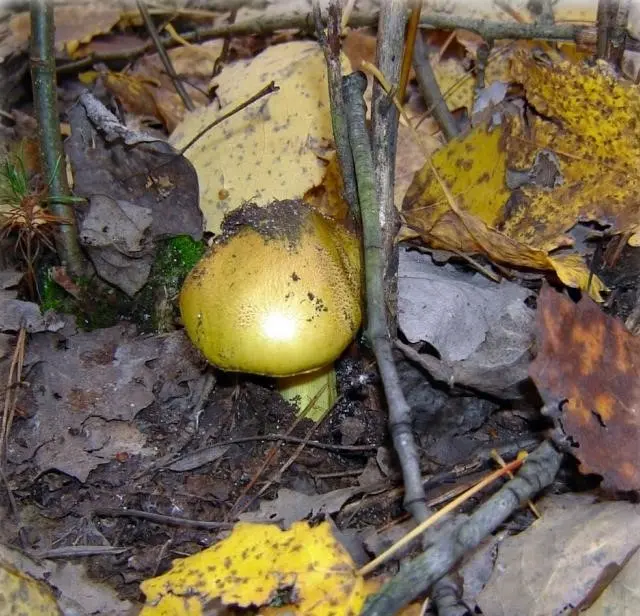
What does a green row mushroom look like?
The hat of the green row is very fleshy, at first bell-shaped, later – open-curved. In its middle there is a small tubercle, the edges are raised, often wavy or cracked, the size varies between 4-15 cm. To the touch, the greenfinch hat is dense, smooth, sticky, especially in wet weather. The skin is yellow-olive or yellow-green along the edges and brownish in the center, smooth or scaly. Young mushrooms are painted in light colors, they darken with age. The plates are free, frequent, thin, lemon-yellow or greenish-yellow. The leg is even, rigid, thickened downwards. It is the same color as the hat or a little lighter. It has a dense fibrous structure, covered with small brownish scales at the base. The pulp of a young green row is white, dense, yellowish under the skin, with a slight floury smell. As the fungus grows, it darkens a little. On the cut, the color does not change.
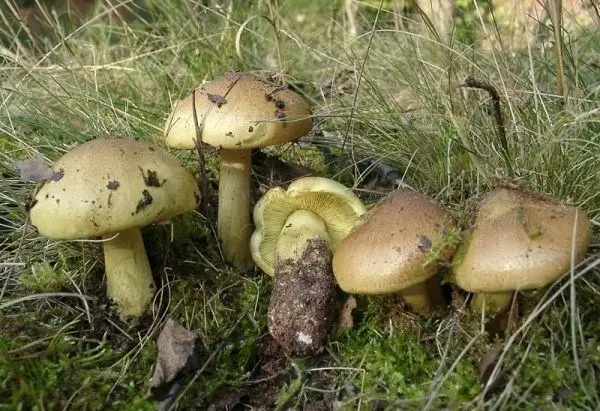
Is it possible to eat a row of green
Ryadovka green refers to conditionally edible mushrooms. It has been proven that the skin and pulp contain toxins that have a negative effect on the human body. Even prolonged soaking and heat treatment do not lead to their complete destruction. The excessive use of greenfinches can cause food poisoning, disorders in the functioning of the cardiovascular system and kidneys. It is believed that the largest amount of toxins is in the skin, and if it is removed, then the problem will be solved. But it is not. Toxins are present throughout the fruiting body, and this must be taken into account. Row green can be eaten only in cooked form and in small quantities.
The taste of the mushroom
Zelenushka is one of the most delicious representatives of the Ryadovkovye family. Its color often deters inexperienced mushroom pickers who have doubts about edibility. Because of the mild taste, greenfinch is classified as category IV mushrooms. However, many fans highly appreciate its taste qualities and consider it a wonderful and healthy late mushroom species.
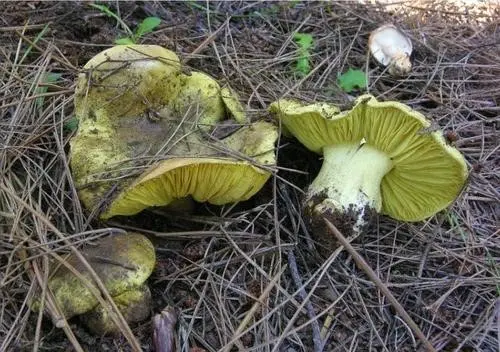
Benefits and harm to the body
Green row is rich in vitamins and minerals. It contains most of the B vitamins, vitamins A, C, D, PP, copper, manganese, zinc, potassium, phosphorus, iron, sodium, selenium. It has antibacterial properties. Fomecin and clitocin contained in it are effective in the prevention of cancerous tumors. Zelenushki are low-calorie and at the same time very nutritious, therefore they are recommended for dietary nutrition. It is especially useful to use these mushrooms for people with diseases of the pancreas and the cardiovascular system. For those who have problems with the gastrointestinal tract, it is advisable to refrain from using green rows. People who have problems with blood clotting should consult a doctor: greenfinch has the ability to thin it and inhibit platelet activity.
The content of toxic substances in greenfinch mushrooms requires caution in their use. Harm to the body can cause only immoderation in eating. A simple truth should be remembered: everything is poison, and everything is a medicine, only the measure determines the difference.
False doubles
Representatives of the family are very similar to each other in the structure of the fruiting bodies, but differ mainly in color. A characteristic feature that unites all types of rows is the scaly or fibrous surface of the caps. Comparing a photo of a greenfinch row with images of false varieties will help inexperienced mushroom pickers learn to distinguish between them.
Sulfur-yellow rowweed (Tricholoma sulphureum)
Most often, the greenfinch is confused with the inedible sulfur-yellow row. She has a flat-bulging hat of a bright sulphur-yellow color, light at the edges and darker in the middle. The plates are thick, rare, yellow or green-yellow. The cylindrical leg of a lighter shade is often curved. The flesh is the same color or greenish, characterized by a bitter burning taste, exudes an unpleasant smell of hydrogen sulfide. Eating is hazardous to health.
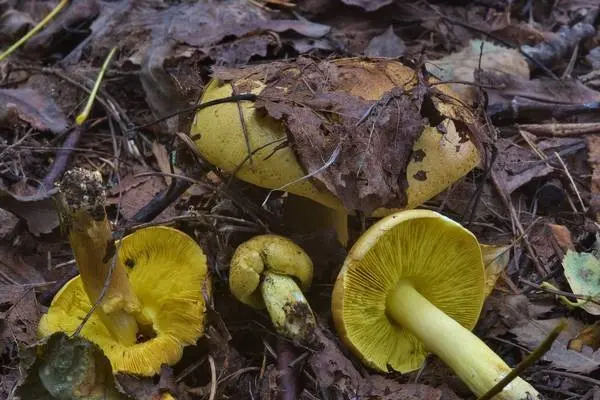
Spruce Row (Tricholoma aestuans)
An inedible mushroom, when eaten, causes an upset of the digestive system. The fruit body of the fungus has a greenish color with a brown tint. Cap 3-10 cm in diameter, bell-shaped or flat with a small tubercle in the center, sticky, shiny, scaly. There are barely visible radial stripes on the surface. The plates are yellow, thin, frequent. Mature mushrooms are prone to cracking. The flesh is whitish or light yellow. Compared to the green row, the spruce tree has a less fleshy hat, a longer and thinner stem, bears fruit in August-September, and does not “hide” in the litter.
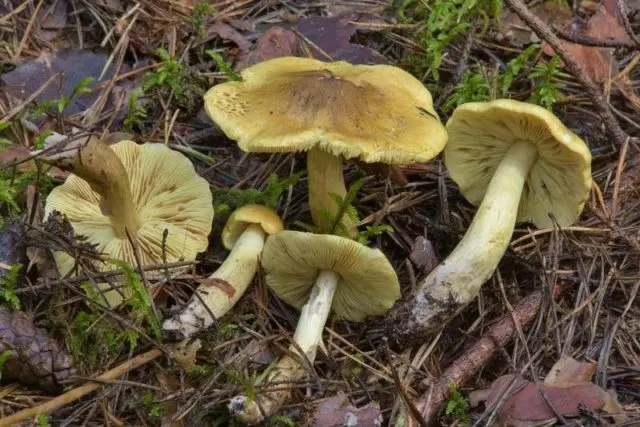
Row isolated (Tricholoma sejunktum)
Experts are divided in opinion about this variety of rows: some consider it inedible, others consider it conditionally edible. Despite the bitter taste and medicinal smell, many salt and marinate the isolated row, after soaking it for a long time and boiling it in several waters.
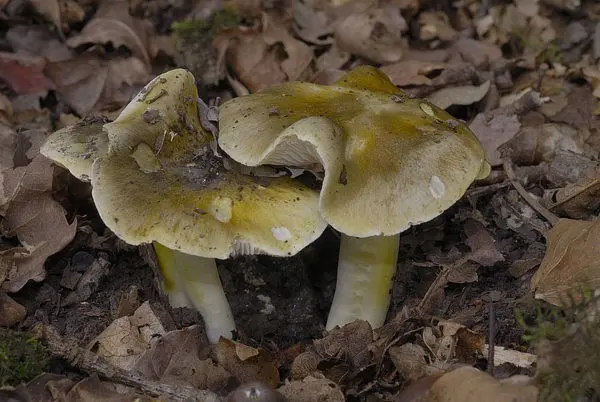
The mushroom has a convex, dark olive, scaly cap with a characteristic tubercle in the middle and curved down edges. The plates are white or grayish, wide, sparse, free. The leg is dense, long, covered with small scales. Its color changes from white-green above to dark gray below. The flesh is white in the cap and yellowish in the stem, bitter. Separate rows are collected from August to October.
Soap row (Tricholoma saponaceum)
The hat of the soap row can have a wide variety of colors: light and dark brown, olive green, olive brown. The plates are pale, greenish-yellow, yellow-gray, adherent, rare. The pale greenish-yellow cylindrical stalk widens towards the base, becoming a pale pink color in adults. The flesh is white or yellowish, with an unpleasant taste and a strong smell of fruit soap, it turns red when cut.
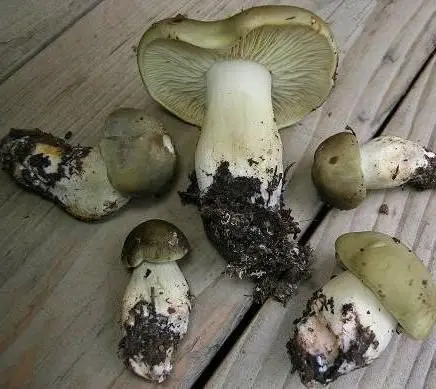
Deciduous rowweed (Tricoloma frondosae)
The mushroom has another name – aspen greenfinch. Cap 4-15 cm in diameter, bell-shaped or prostrate with a wide tubercle in the center, greenish-yellow, olive-yellow or sulfur-yellow. The middle of the cap is covered with brownish scales, the edges are uneven, with time they rise up and wrap. The plates are frequent, notched-grown, yellow or greenish. The leg is long, thin, the same color as the hat. The flesh is white or yellowish, with a pleasant mild taste and a slight aroma. The mushroom is conditionally edible, just like the green row, it contains toxins.
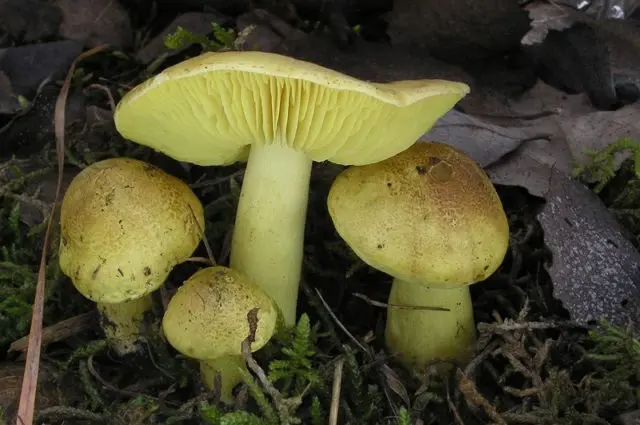
Russula green (Russula aeruginea)
An unpretentious mushroom that grows under any trees, often under conifers. It has a green or yellow-greenish hat, convex or depressed, with a sticky surface and grooves along the edges. The leg is straight, white with rusty-brown speckles. The plates are frequent, adherent, white, sometimes with rusty spots. Flesh, brittle, bitter.

Russula greenish (Russula virescens)
It has a fleshy, matte, yellow or blue-green cap, hemispherical in young mushrooms, prostrate in mature mushrooms. The stem is white, with brownish scales at the base. The plates are frequent, creamy-white, forked-branched. The flesh is dense, whitish, not caustic, but pungent in taste.
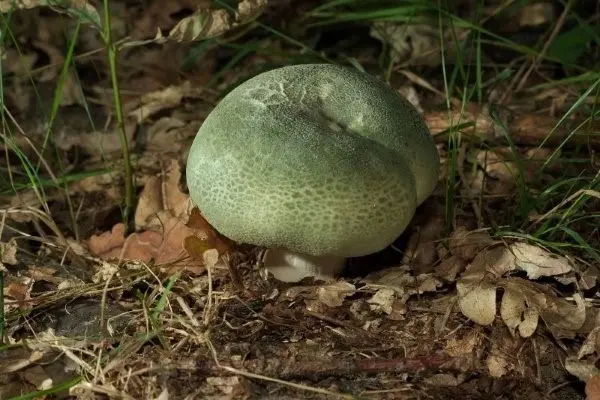
Also, greenfinch can be confused with cobwebs – odorous or black-green. They are not poisonous, but they do not have good taste. A characteristic distinguishing feature of cobwebs is a cobweb cover, which in adult mushrooms is preserved in the form of a ring in the upper part of the stem and cobwebs along the edge of the cap.
Cobweb black-green on the picture:
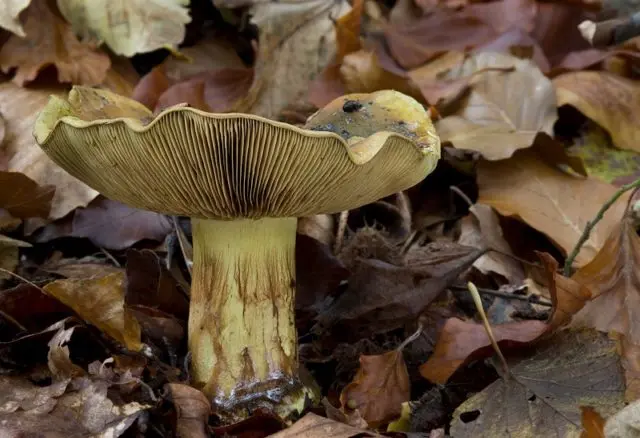
With deadly poisonous pale grebe it is impossible to confuse the green row. The pale yellow color of the cap, the leathery “skirt” at the top of the stem and the cup-shaped Volvo at the base – thanks to these features, the toadstool is easy to distinguish from other mushrooms.
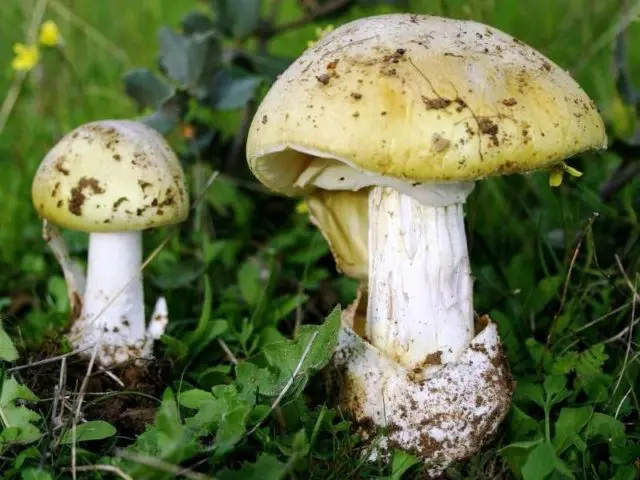
Collection rules
Greenfinches are harvested in late autumn, when other mushrooms are already finishing fruiting. The main part of the fruiting body of the fungus is usually hidden in a thick layer of soil, fallen leaves or needles. In an adult specimen, only a hat is visible above the ground, while a young one gives itself out as a small tubercle or a crack in the soil.
Greenfinch is carefully cut off with a sharp knife under the root, then the base of the leg with adhering earth is also cut off. The earth and forest debris firmly adhere to the sticky skin, from which the green row must be cleaned during collection. Dirt is removed with a special brush or scraped off with a knife. When collecting green rows, preference should be given to young specimens that do not have signs of spoilage. It is characteristic that this variety of tricholomas is practically not damaged by insects.
Cooking a row of green
Ryadovka green or greenfinch can be prepared in any convenient way – stew, boil, bake, pickle and salt. First, be sure to peel the hat from the skin and rinse the mushrooms thoroughly. To simplify the process, they need to be soaked in cool water for 1 hour. During this time, the greenfinch must be gently mixed several times so that the sand is washed out of the opened plates. Then the green rows should be washed in running water and boiled for 20 minutes with the addition of salt.
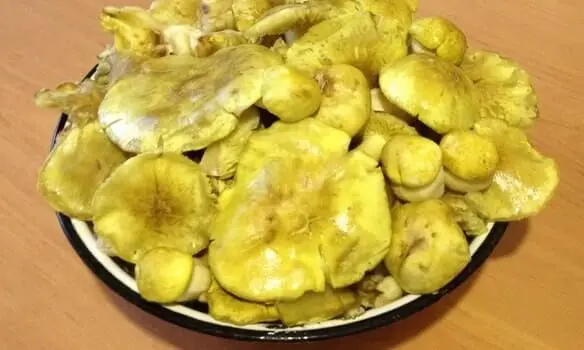
Soups, thick sauces, mushroom caviar are prepared from green rows. These mushrooms have a strong aroma, so some cooks do not recommend mixing them with other species. Zelenukha goes well with potatoes, garlic, peppers, onions, mayonnaise, pasta, rice and buckwheat. Harmonizes with meat dishes, is used as a filling for rich, savory pastries.
Conclusion
Ryadovka green is a late gift of the forest before the coming winter, the last opportunity in the outgoing season to eat fresh mushrooms and prepare them for long-term storage. You just need to remember that greenfinch cannot be consumed in unlimited quantities, and follow all the rules for collecting and cooking.









